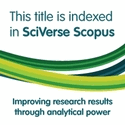Novosti
|
This journal is indexed in Scopus |
|---|
Year 2018 Vol. 26 No 1
SCIENTIFIC PUBLICATIONS
EXPERIMENTAL SURGERY
N.N. YAROTSKAYA 1, V.K. GOSTISHEV 2, V.A. KOSINETS 1, I.V. SAMSONOVA 1
ULTRASTRUCTURAL AND MORPHOFUNCTIONAL CHANGES IN THE MITOCHONDRIAL APPARATUS OF HEPATOCYTES IN EXPERIMENTAL DIFFUSE PURULENT PERITONITIS
Vitebsk State Medical University 1, Vitebsk,
The Republic of Belarus
I.M. Sechenov First Moscow State Medical University (Sechenov University) 2, Moscow,
The Russian Federation
Objective. To study the ultrastructural changes in the liver mitochondria in experimental diffuse purulent peritonitis against the background of the metabolic support.
Methods. The morphometric evaluation of the rabbit liver mitochondria electron microscopic images (n=55) was performed in experimental diffuse purulent peritonitis. The obtained electron diffraction patterns were estimated using the ImageJ 1.45s program, in which the number of mitochondria sections, the number of intermithochondrial contacts and the number of damaged and intact mitochondria were counted. The average area, perimeter, and specific volume (measured in %) were calculated for the undamaged mitochondrial profiles. Metabolic agents with energotropic properties, phosphocreatine preparations containing creatine phosphate and preparations containing the succinic acid, niacinamide, inosine diphosphate and riboflavin were used.
Results. Electron microscopic analysis of mitochondria of hepatocytes made it possible to reveal significant changes in their structure, caused by the development of purulent peritonitis. Morphometric evaluation of electron diffraction patterns showed changes in the quantitative and qualitative characteristics of mitochondria: the ratio of the damaged and intact mitochondria, their size, perimeter and specific volume of all groups. The use of metabolic support permitted to reduce the negative effect of purulent peritonitis in the postoperative period, which is exerted on the liver mitochondria, in comparison with the control group of animals that did not receive any metabolic support. Conducting a comparative analysis revealed a higher efficacy of the metabolic agent containing the succinic acid, niacinamide, inosine diphosphate and riboflavin, which resulted in more intensive restoration of the mitochondrial membrane structure.
Conclusions. The development of purulent peritonitis is accompanied by a violation of the ultrastructural organization of the liver mitochondria in all studied groups. Metabolic correction allows restoring the membrane structure of mitochondria, and as the result improving the energy supply of cells to combat the negative consequences of endotoxicosis in peritonitis.
- Vlasov AP, Tarasova TV, Kozlov IG, Loginova OV, Leshankina NY, Visaitov DA. The ways rising of detoxication natural mechanisms during peritonitis. Kuban Nauch Med Vestn. 2010;(2):17-22. (in Russ.)
- Chernov VN. Foci of introduction of infection and hepatic failure-accuracy in common abdominal infections. Kuban Nauch Med Vestn. 2013;(3):135-38. (in Russ.)
- Mittal M, Siddiqui MR, Tran K, Reddy SP, Malik AB. Reactive oxygen species in inflammation and tissue injury. Antioxid Redox Signal. 2014 Mar 1; 20(7):1126-67. doi: 10.1089/ars.2012.5149.
- Burnstock G, Vaughn B, Robson SC. Purinergic signalling in the liver in health and disease. Purinergic Signal. 2014 Mar;10(1):51-70. doi: 10.1007/s11302-013-9398-8.
- Camara AK, Lesnefsky EJ, Stowe DF. Potential therapeutic benefits of strategies directed to mitochondria. Antioxid Redox Signal. 2010 Aug 1;13(3):279-47. doi: 10.1089/ars.2009.2788.
- Jain MV, Paczulla AM, Klonisch T, Dimgba FN, Rao SB, Roberg K, Schweizer F, Lengerke C, Davoodpour P, Palicharla VR, Maddika S, łos M. Interconnections between apoptotic, autophagic and necrotic pathways: implications for cancer therapy development. J Cell Mol Med. 2013 Jan;17(1):12-29. doi: 10.1111/jcmm.12001.
- Reynolds ES. The use of lead citrate at high pH as an electron-opaque stain in electron microscopy. J Cell Biol. 1963 Apr;17:208-12.
- Bagnenko SF, Gorbachev NB, Amagyrov VP, Batotsyrenov BV, Miroshnichenko VN. Farmakologicheskaia korrektsiia metabolicheskikh narushenii pri razlitom peritonite: posobie dlia vrachei. S-Petersburg; 2007. 20 p. (in Russ.)
- Yakubouski SV, Lapsha VI, Emelianovа АА, Chaika LD. Alterations of liver microcirculation in experimental abdominal surgical infection and their pharmacological correction. Novosti Med-Biol Nauk. 2010;2(4):189-95. (in Russ.)
- Rumiantseva SA, Stupin VA, Afanas’ev VV, Oganov RG, Silina EV. Ratsional’naia farmakoterapiia pri sosudistoi patologii, ili chto takoe khorosho i chto takoe plokho: Klin praktikum po lekarstv terapii. Moscow - S-Petersburg, RF: Med kn; 2014. 339 p. (in Russ.)
- Vlasov PA, Suslov AV, Shibitov VA, Timoshkin SP, Loginov MA. Metabolicheskaia terapiia v korrektsii enteral’noi nedostatochnosti. Vestn Mordov Un-ta. 2013;(1-2):142-45. (in Russ.)
- Okovityi SV, Shulenin SN, Smirnov AV. Klinicheskaia farmakologiia antigipoksantov i antioksidantov. S-Petersburg, RF: FARMindeks; 2005. 72 p. (in Russ.)
- Perepech NB. Neoton (mekhanizmy deistviia i klinicheskoe primenenie. 2-e izd. S-Petersburg: Progress-Pogoda; 1997. 88 p. (in Russ.)
210022, The Republic of Belarus,
Vitebsk, Frunze Avenue, 27, b. 3
Vitebsk State Medical University,
Research Laboratory,
Tel. mobile: +375 29 714-18-76,
e-mail: yardip@yandex.ru,
Yarotskaya Natalia N.
Yarotskaya Natalia N., Researcher of the Research Laboratory, Vitebsk State Medical University, Vitebsk, Republic of Belarus.
http://orcid.org/0000-0002-2493-7653
Gostishev Victor K., MD, Professor, Academician of RAMS, Head of the General Surgery Department of the Medical Faculty, I.M. Sechenov First Moscow State Medical University (Sechenov University), Moscow, Russian Federation.
http://orcid.org/0000-0002-2900-0069
Kosinets Vladimir A., MD, Professor of the Hospital Surgery Department with the Courses of Urology and Pediatric Surgery of Vitebsk State Medical University, Vitebsk, Republic of Belarus.
http://orcid.org/0000-0001-7127-1877
Samsonova Inna V., PhD, Associate Professor, Head of the Pathologic Anatomy Department, Vitebsk State Medical University, Vitebsk, Republic of Belarus.
http://orcid.org/0000-0003-0847-9856




























